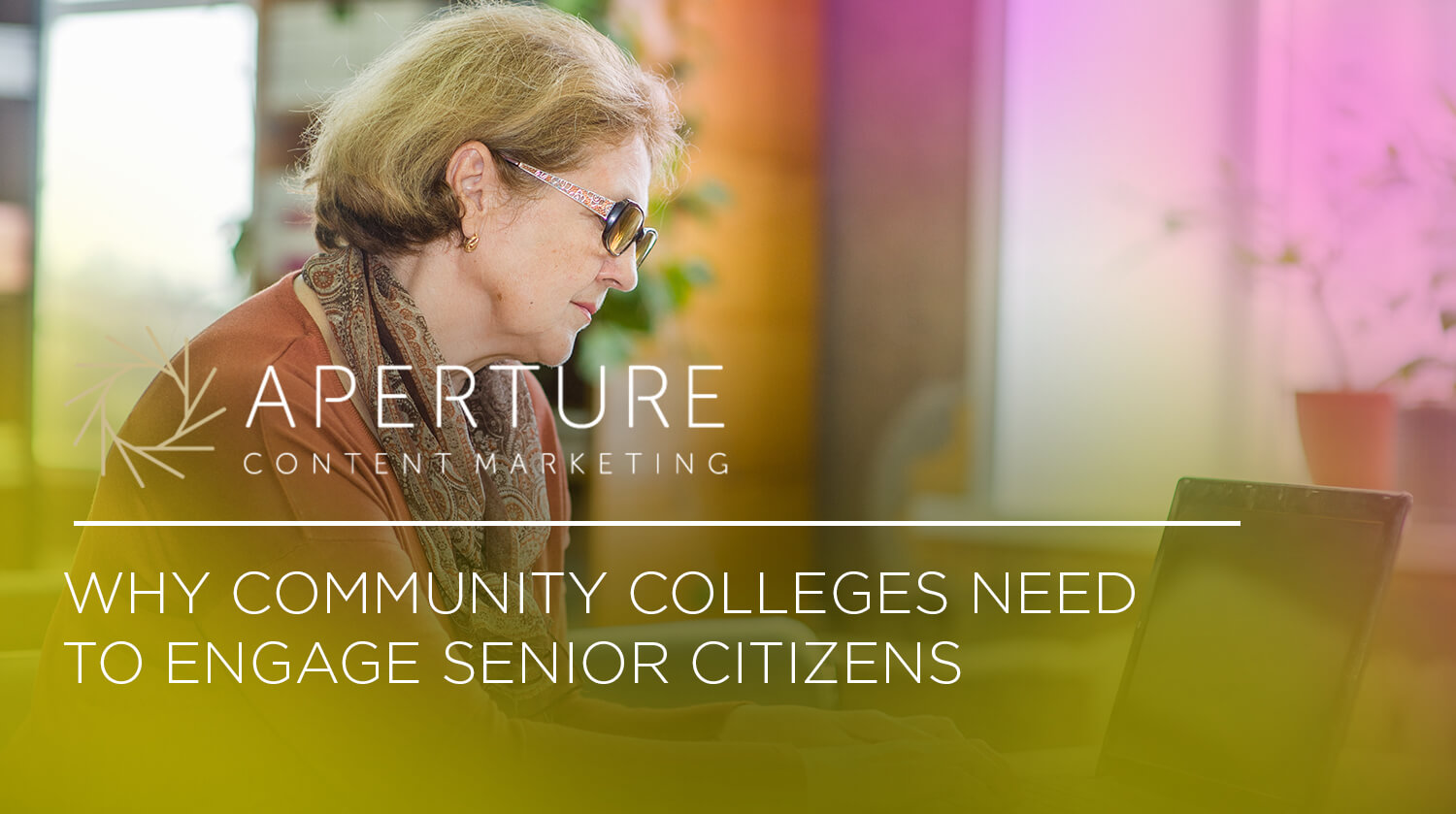Community colleges offer great benefits to senior citizens, but many remain unaware.
When most of us think of the typical community college demographic, the people who spring to mind are probably in their late teens or early twenties. The bulk of enrollees are recent high-school students who hope to attain a professional degree or else transfer to a four-year institution. Because of this, many community colleges have focused the bulk of their outreach on 18–25-year-olds, and seen steady, positive results as a consequence of these efforts.
However, the over-sixty demographic is also an exceptionally important—yet often overlooked—age group for community colleges. These prospective students are eager to learn, have fewer restrictions on their time and finances, and bring a lifetime of experience to class. Because they are typically taking courses to satisfy personal interests, they are strongly motivated to complete the program. And with a full career behind them, they are often ready and willing to act as mentors to younger students.
All these factors make senior citizens valuable members of the community college student body. But they also play a crucial role in securing a college’s funding, in both the short and long terms.
Senior citizens form a significant voting block for millage proposals.
A significant portion of community college funding comes from tax dollars. If a college wants more funding, they can request a raise of the millage rate of property taxes, which requires voter approval. As millage rates are a portion of the property tax, this has special bearing on senior citizens for several reasons.
First, senior citizens are more likely to be property owners than younger members of the population. So, while their vote would be important under any circumstances, it is especially important for millage proposals, as the rise in millage rate would affect them more than someone fresh out of high school. Second, the property that senior citizens do own is likely to be more valuable than the first home of someone in their twenties. Finally, despite senior citizens being more likely to own more—and more valuable—property, they’re also more likely to be living on a fixed income that may not have a lot of flexibility for paying higher tax rates.
Even so, appealing to senior citizens can grow support for a raise in millage rates by demonstrating that the community college isn’t just for younger students. By showcasing the programs that are of interest to senior citizens, community colleges to call attention to the benefits they bring to the entire community.
Demand among senior citizens is a driving force behind programs and services.
Senior citizens don’t just affect funding—they also influence the types of programs a community college offers. Many senior programs are launched in response to demand from citizens, but without ongoing awareness campaigns, these programs can fail to thrive.
In many cases, increasing enrollment in senior programs is merely a matter of drawing attention to them. Classes and support programs with robust attendance rates are easy to justify, and can even lead to new programs as seniors become more engaged.
Awareness among senior citizens can raise awareness among other demographics as well.
Word of mouth is a powerful force in marketing, especially among senior citizens, who are more likely to have cross-generational influence than other demographics. While younger students hold significant influence over their peers, they are less likely to spread information upward.
A parent or grandparent, on the other hand, is more likely to identify individuals from both their peer group and younger demographics who may be interested in a community college program, and pass that information along in a timely manner.
How can community colleges connect with senior citizens?
Clearly, senior citizens play a pivotal role in the community college ecosystem. With so much resting on retaining and growing support for the college among these citizens, community colleges should consider every outreach possibility to ensure their message has a broad reach. We have identified three such strategies that have been successful in growing awareness and enrollment rates at community colleges.
1. Lengthy, information-rich articles are more likely to persuade and engage.
Raising awareness of community college programs is a matter of education. Fortunately, senior citizens like to stay informed, especially in matters that are a direct concern to them. High-quality, well-researched articles have proven to be an effective communication strategy that seniors not only appreciate themselves, but are more likely to share with others.
2. Traditional print mailers are still an effective marketing strategy.
Print has staying power. While the reputation of print advertising has declined recently, its effectiveness hasn’t—particularly among older citizens, who are used to paying closer attention to their mail.
3. Senior Citizens are highly active and involved on Facebook.
Many social media platforms are too new and trendy to interest senior citizens. Those who still maintain professional connections may still be involved on LinkedIn, but by far, the most reliable social platform to reach senior citizens is through Facebook. In fact, according to a recent PEW survey, while the 18–29 demographic is the most likely to be on Facebook (79%), the 65+ age group is almost as likely to be on the platform as high-schoolers (46% vs. 51%).
Community colleges serve the whole community.
Community colleges are so-called because they benefit the entire community—not just teens and young adults. Colleges that can prove their value to every demographic will secure support from their communities for years to come. For this reason, it is essential the colleges keep every member of their community informed of the programs and resources available to them.
Our mission is to help community colleges reach all members of their district who may have need of or interest in their services—including senior citizens. In fact, one community college in Texas has recently used our platform to create a new publication, SeniorFocus, designed specifically for senior citizens in their community. If you are interested, you can take a closer look at their latest issue, or contact us directly for more information.


